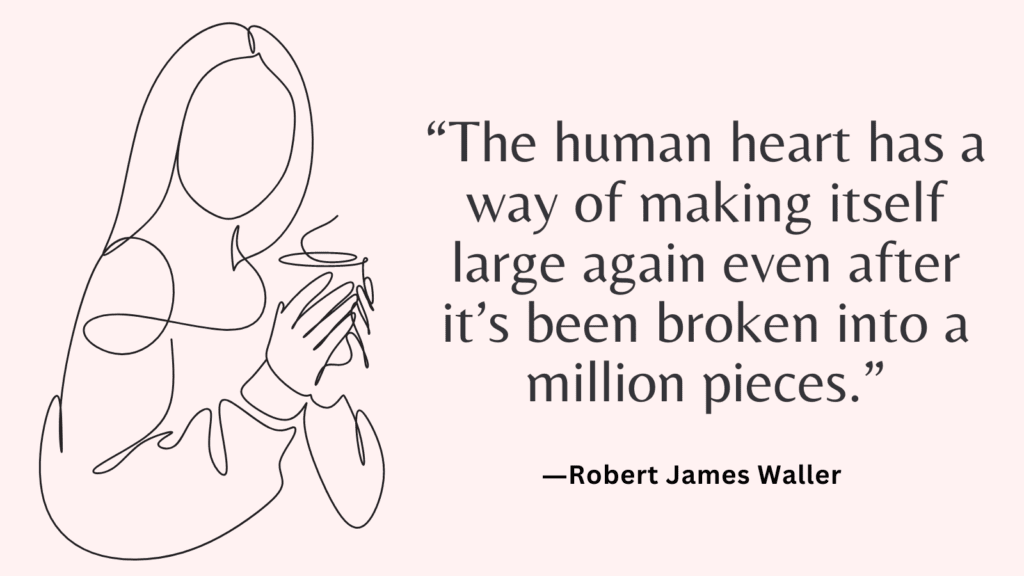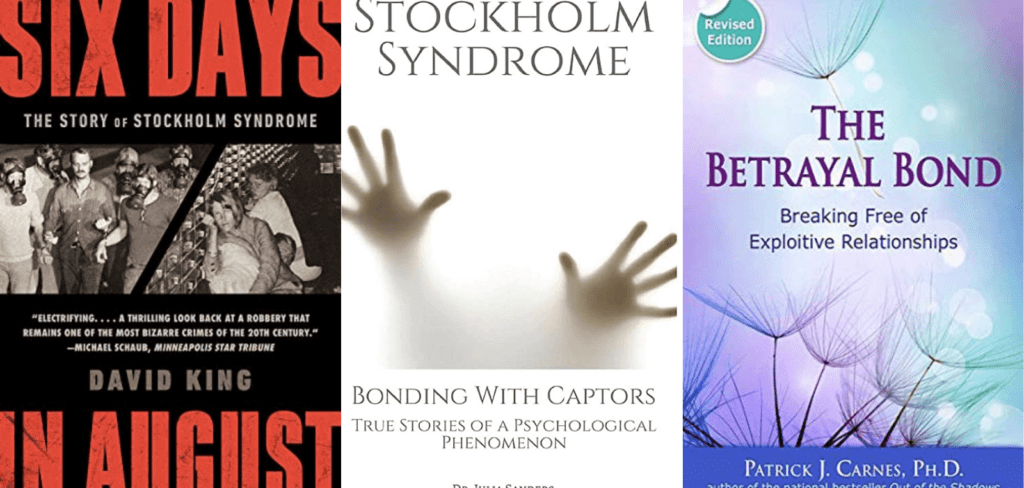In this post, you’ll learn how to break trauma bond with a narcissist.
What Is Trauma Bond?
Trauma bonding is a strong emotional attachment that forms between two people as a result of intense, often negative experiences they have gone through together.
It can occur in situations such as abusive relationships, cults or during times of war or captivity.
In these situations, victims often feel a strong emotional connection to their perpetrator or captor, despite the harm they are causing.
This connection can be difficult to break, and the victim may feel a sense of loyalty or obligation towards the abuser.
Trauma bonding can be harmful and dangerous as it can prevent individuals from leaving abusive situations and seeking help.
Related: Top 10 Signs Of Trauma Bonding & How To Heal A Trauma Bond
Signs And Symptoms Of A Trauma Bond
Some signs and symptoms of a trauma bond include:
1. Intense feelings of loyalty or attachment to the abuser, despite the abuse they have suffered.
2. Difficulty leaving the abusive relationship even when it is clearly harmful.
3. Feeling like the abuser has “saved” them from something or that they are the only ones who truly understand them.
4. A tendency to make excuses for the abuser’s behavior or justify it.
5. Feeling addicted to the emotional highs and lows of the relationship and fearing life without them.
6. Feeling anxious, depressed or hopeless when the relationship ends, even if they were the ones who ended it.
7. Struggling with self-esteem issues and feeling unworthy of love or respect outside of the abusive relationship.
Related: 7 Stages Of Trauma Bonding (+FREE Worksheets)
What Does A Trauma Bond With A Narcissist Look Like?
In a trauma bond with a narcissist, the victim often experiences a cycle of idealization and devaluation, where the narcissist alternates between showering them with attention and affection, followed by harsh criticism, manipulation, and emotional abuse.
The victim may feel like they are constantly walking on eggshells, trying to avoid triggering the abuser’s anger or disapproval.
They may also feel isolated from their friends and family, as the narcissist often employs tactics such as gaslighting and isolation to maintain control over the victim.
Despite the abuse, the victim may feel like they cannot leave the relationship as they have become so enmeshed with the narcissist that they feel like they cannot live without them.
This creates a strong emotional bond, where the victim feels like the only way to regain the love and validation they need is by staying with the abuser.
Related: Best 5 Stockholm Syndrome & Trauma Bonding Books
Common Tactics Narcissists Use To Create A Trauma Bond
Narcissists use a variety of tactics to create a trauma bond with their victims. Some common tactics include:
1. Love bombing: This is an intense and overwhelming display of affection, attention, and flattery that makes the victim feel loved and cherished.
2. Gaslighting: Narcissists manipulate their victim’s perception of reality to make them question their own sanity or memory.
3. Isolation: The narcissist may isolate the victim from friends, family, or support systems in order to gain greater control over them.
4. Fear: The narcissist may instill fear in the victim through threats or intimidation in order to keep them compliant.
5. Guilt tripping: The narcissist may use guilt as a way to control the victim’s behavior and keep them feeling responsible for the narcissist’s happiness.
6. Devaluation: Once the narcissist has gained control over the victim, they may begin to devalue and criticize them in order to keep them in a state of confusion and vulnerability.
7. Triangulation: The narcissist may bring in a third party to create jealousy or conflict, further manipulating the victim’s emotions and loyalty.
These tactics can create a powerful and difficult-to-break bond between the victim and the narcissist.
Related: 21 Stages of a Narcissist Relationship (+FREE Breakup Recovery Worksheets)
How to Break Trauma Bond with a Narcissist? Top 6 Ways
Breaking a trauma bond with a narcissist can be difficult and requires a lot of effort and self-reflection.
Here are some steps you can take:
#1. Acknowledge The Problem and Face Reality
The first step to breaking a trauma bond with a narcissist is acknowledging that there is a problem.
It’s essential to realize that you have been in an unhealthy relationship, and it’s time to break free.
Related: 8 Stages Of Healing After Narcissistic Abuse (+FREE Breakup Recovery Worksheets)
#2. Seek Professional Help
Trauma bonds can be challenging to break, and seeking the help of a therapist or counselor can be beneficial.
They can help you understand your emotions and offer tools to help you cope and move on from the relationship.
#3. Cut Off All Contact
It’s essential to cut off all contact with the narcissist, including phone calls, texts, and social media.
This may be difficult, but it’s necessary to create boundaries and protect yourself emotionally.
Related: Top 5 Reasons Why Narcissists Target Empaths – & How to Starve The Narcissist of Supply
#4. Practice Self-Care
Take care of yourself by eating well, exercising, getting enough sleep, and engaging in activities that make you happy.
Self-care is crucial and can help you heal from the emotional trauma of the relationship.
#5. Recognize Your Triggers
Identify the things that trigger memories or emotions associated with the narcissist and avoid them.
It’s also crucial to recognize the warning signs of a potential future partner with narcissistic tendencies.
Related: Top 10 Journal Prompts For Narcissistic Abuse (+FREE Worksheets)
#6. Set Healthy Boundaries In Future Relationships
Identify your needs and values and make sure to clearly communicate your boundaries with your partner. Be honest and direct about what is important to you.
Setting healthy boundaries is an important aspect of any healthy relationship. It helps to establish trust, respect, and mutual understanding between partners.
Related: Top 10 Emotional Boundaries In Dating You Should Set From The First Date

Conclusion
A trauma bond is a type of attachment that forms in abusive or unsettling relationships where the victim feels emotionally trapped to their abuser.
Breaking a trauma bond with a narcissist can be a long and challenging journey, but it’s essential to prioritize your mental health and well-being. Remember that you deserve to be loved, respected, and valued.
FAQ
Can A Trauma Bond Become Healthy?
While it can be difficult to break free from a trauma bond, it is possible to heal and develop a healthier relationship.
The first step in healing a trauma bond is to acknowledge that it exists and identify the patterns and behaviors that keep the bond in place.
Next, working with a therapist or counselor who specializes in trauma can help you understand how your past experiences have impacted your current relationships and provide tools for creating new, healthy patterns of interaction.
It may also be necessary to set boundaries or even end the relationship if it is too toxic or damaging to continue.
However, with commitment, effort, and professional support, a trauma bond can be transformed into a healthier, more balanced relationship.
Related: 5 Weird Things Covert Narcissists Do To Manipulate Their Victims
How Long Does A Trauma Bond Last?
The duration of a trauma bond can vary depending on the individual and the circumstances of the bond.
Trauma bonds can be very powerful and difficult to break, especially if they involve an ongoing cycle of abuse and manipulation.
In some cases, trauma bonds can last for years or even decades if the person remains in the abusive situation.
However, with the right support and resources, it is possible to break a trauma bond and move towards healing and recovery.



